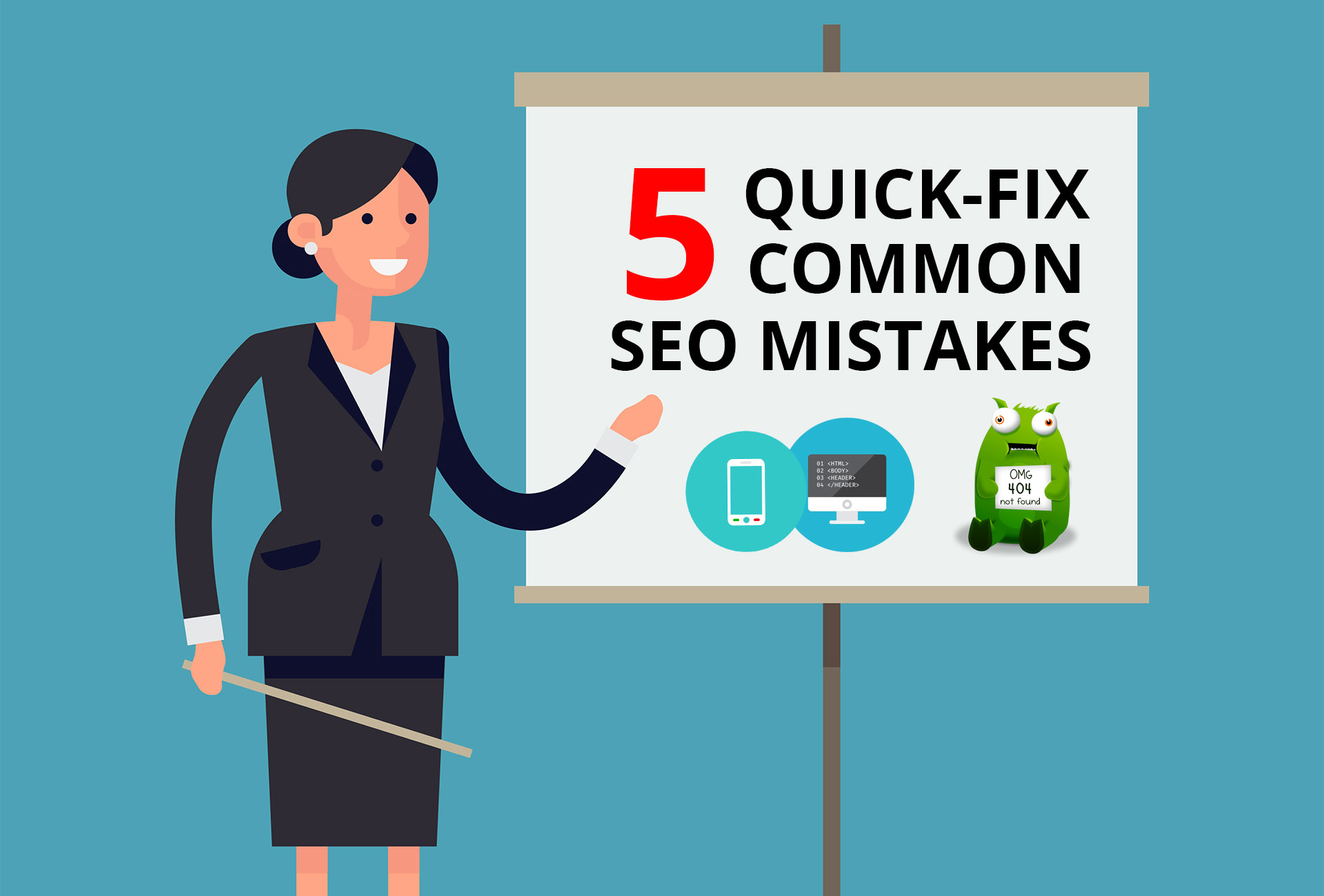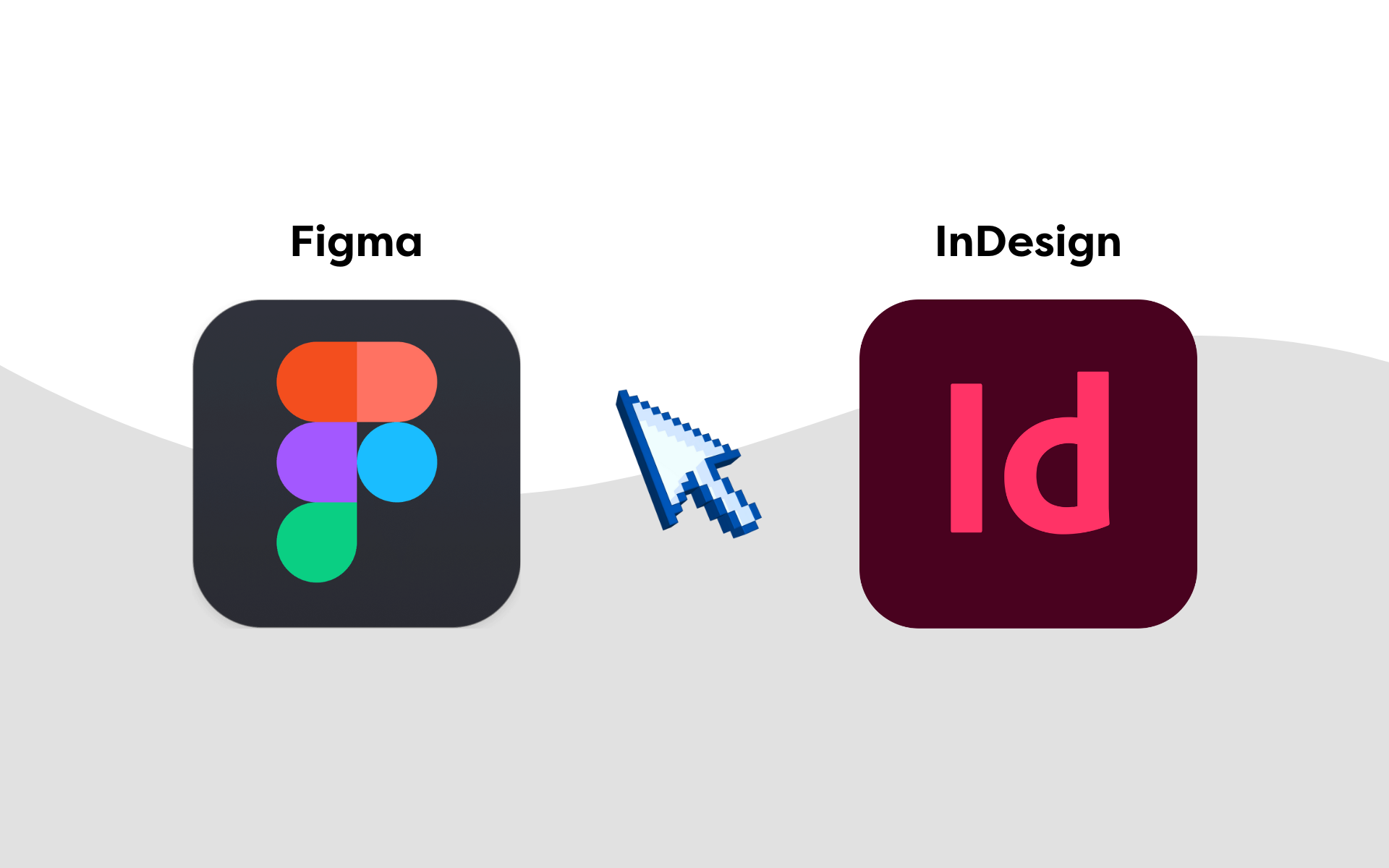Simple SEO mistakes are all too common on the internet. From ridiculous site load times to content duplication and 404 errors, it’s time to get the basics right. With businesses battling for popular rank positions, webmasters must focus on the SEO basics to beat the competition.
As an SEO agency, our team of expert digital specialists audit hundreds of websites ever year. No matter what the industry, size or scale these websites fall into, we seem to find a common theme of basic SEO foundations that have not been implemented during the website build or after launch. With the world of SEO covering so many variables, it is important to fix these quick wins before jumping into any deeper SEO activities. With a few quick tweaks and forward planning, webmasters can lay the foundations for building strong SEO.
After collecting our data of common SEO mistakes, we decided to design a quick infographic to help website owners and those who are new to the complex world of SEO. Here are our top 5 quick-fix common SEO mistakes your website must get right!
-
CHECK FOR 404 ERRORS
404 errors are caused by changed or broken URLs. They could be internal links between pages or external links to other websites. Tracking and fixing 404 errors should be a weekly task for any serious web manager. Failure to keep on top of these easily managed errors can cause visitor bounce rates to increase and result in poor website user experience (UX). You can check your 404 errors via tools such as SEO Yoast for WordPress, Screaming Frog crawl software or your Google Search Console. Once you have found 404 errors, you can re-direct these broken links to other relevant pages.
-
CREATING PAGES WITHOUT META DESCRIPTIONS
Although meta descriptions are not crawled by Google’s algorithms, they can indirectly boost your SEO. Writing attractive page descriptions (max 156 characters) which display in search snippet results, can heavily influence your click through rates (CTR). This user behaviour shows Google that your page is relevant to a user’s search results, which in turn, may lead to increased rankings! Meta descriptions don’t need to be unique content. An excellent way to create these snippets is to simply write a description of your website or page the visitor may visit. Use this meta snippet example tool to help you create your descriptions.
-
HEAVY IMAGERY WITH LARGE FILES
It’s official, Google now counts your site speed as a ranking factor, with prominence being given to websites that load fast across multiple devices. With almost all websites using some form of imagery across content or product pages, it is vital to compress and re-size these files to ensure load times are kept to an acceptable level. The average website should load between 2-3 seconds. When re-sizing your images, do not sacrifice on quality. Use a photo editor such as Photoshop to crunch the file size but ensure the quality remains for visitors to clearly see your products or images. Do not re-size your files with CSS code, this will not help to reduce website load times!
-
NOT BUILDING YOUR SITE FOR MOBILE
According to the latest Google research, more than 50% of global search queries now come from mobile devices! Twinned with the fact Google now crawl mobile websites to determine rank positions, building a mobile ready and device responsive website is of critical importance. If you are a fixed local business such as a coffee shop, building a mobile ready website is vital as new potential customers are now searching on-the-move from their mobiles. If you already have a mobile ready website – good job! Invest time into making the user experience even better. If your site is currently not responsive, sort it out NOW.
-
HTTP VS HTTPS CONTENT DUPLICATION
With Google recently introducing HTTPS as a lightweight ranking search factor, the importance of setting HTTPS alongside an SSL certificate has been making the SEO headlines. In addition to improving your search ranking performance, this new layer of security can also help to protect your website visitors and your online reputation. However, with the recent rush of websites installing an SSL certificate via HTTPS, many webmasters have forgotten a basic SEO error that results in a major duplication of website content. To avoid these duplication issues, it is vital that all HTTP pages are set to permanent 301 re-directs to new HTTPS versions.
There you have it, five quick-fix common SEO mistakes your website can implement. By investing time and effort into your site’s basic SEO foundations, deeper SEO activities are sure to produce stronger results.
Contact our expert digital marketing team here at Marketing Labs to find out how we can help you with SEO.








